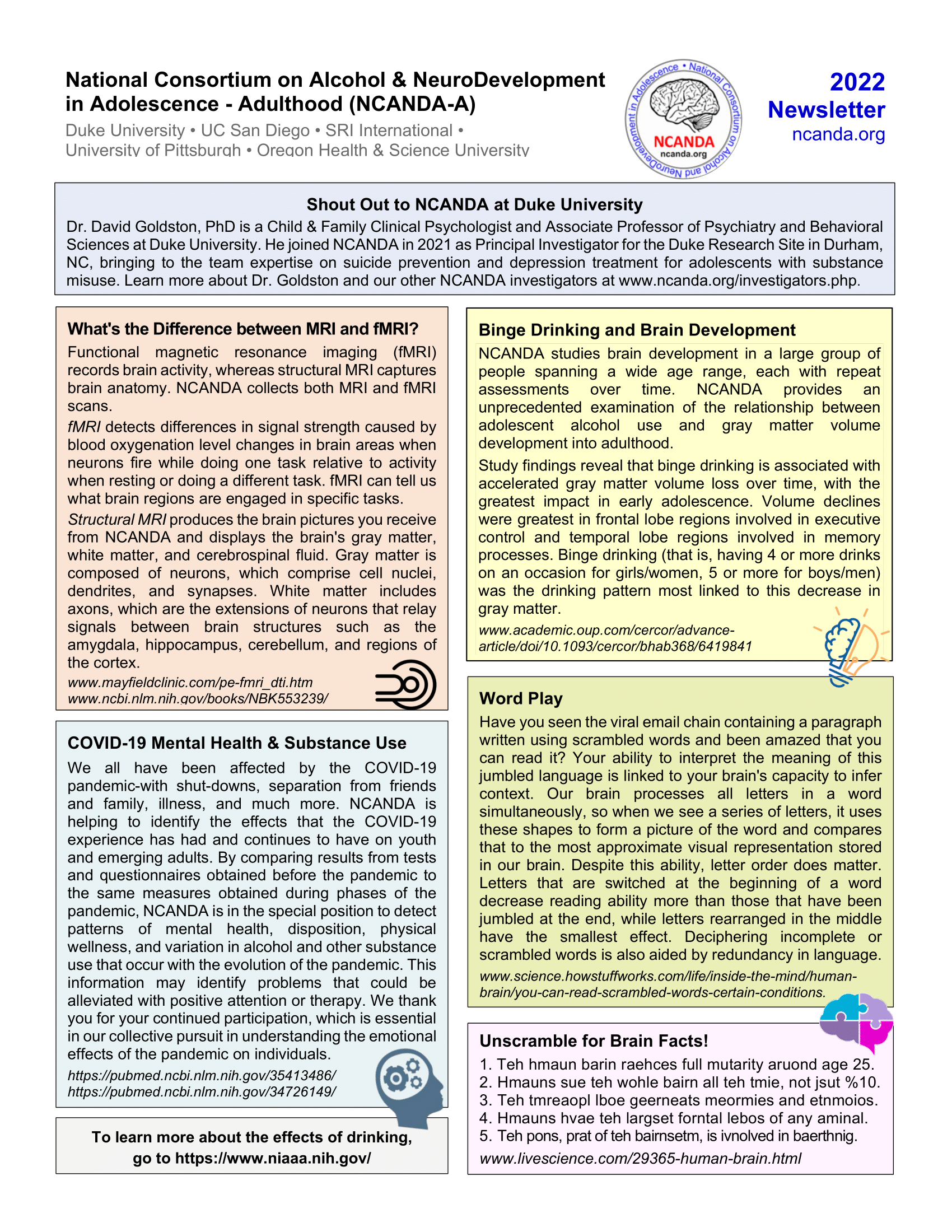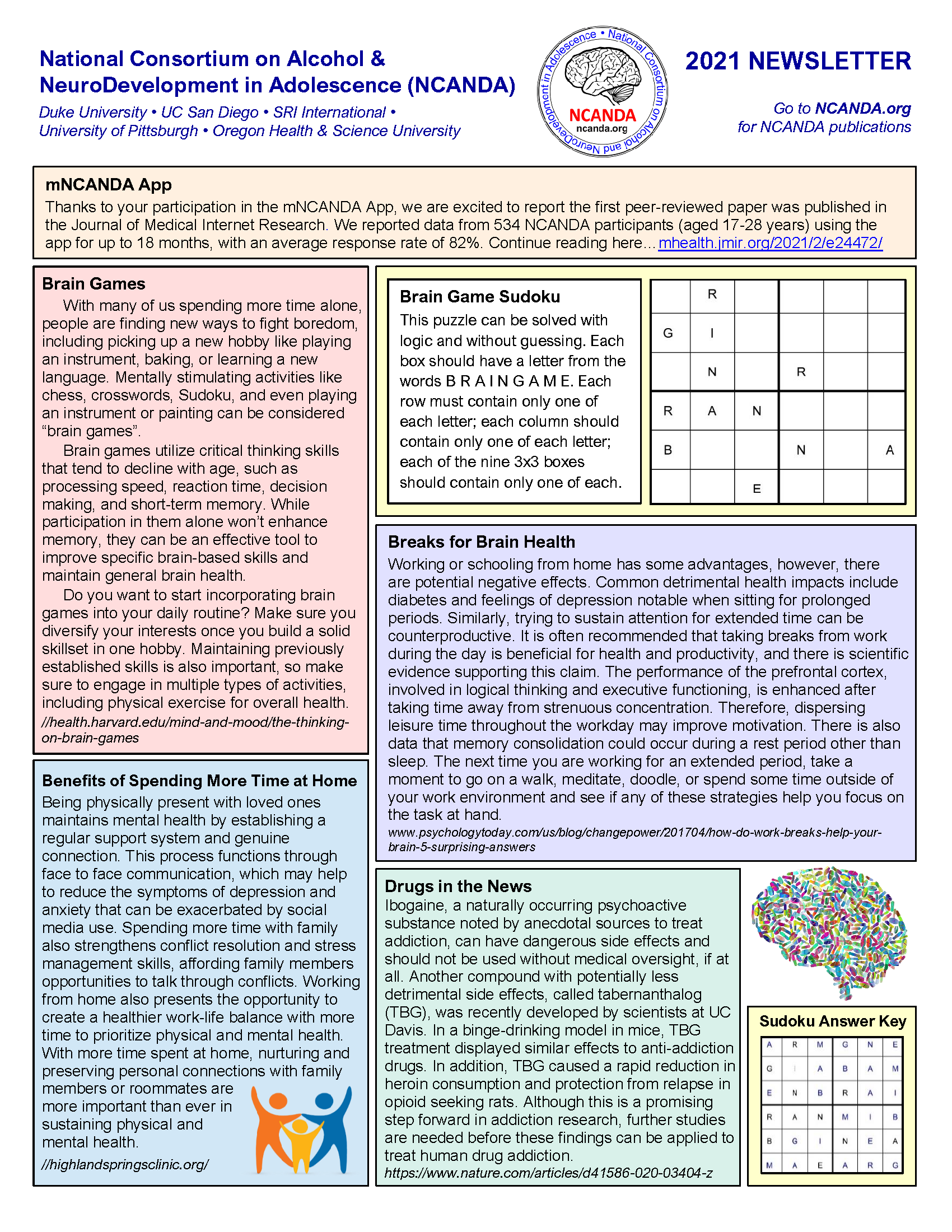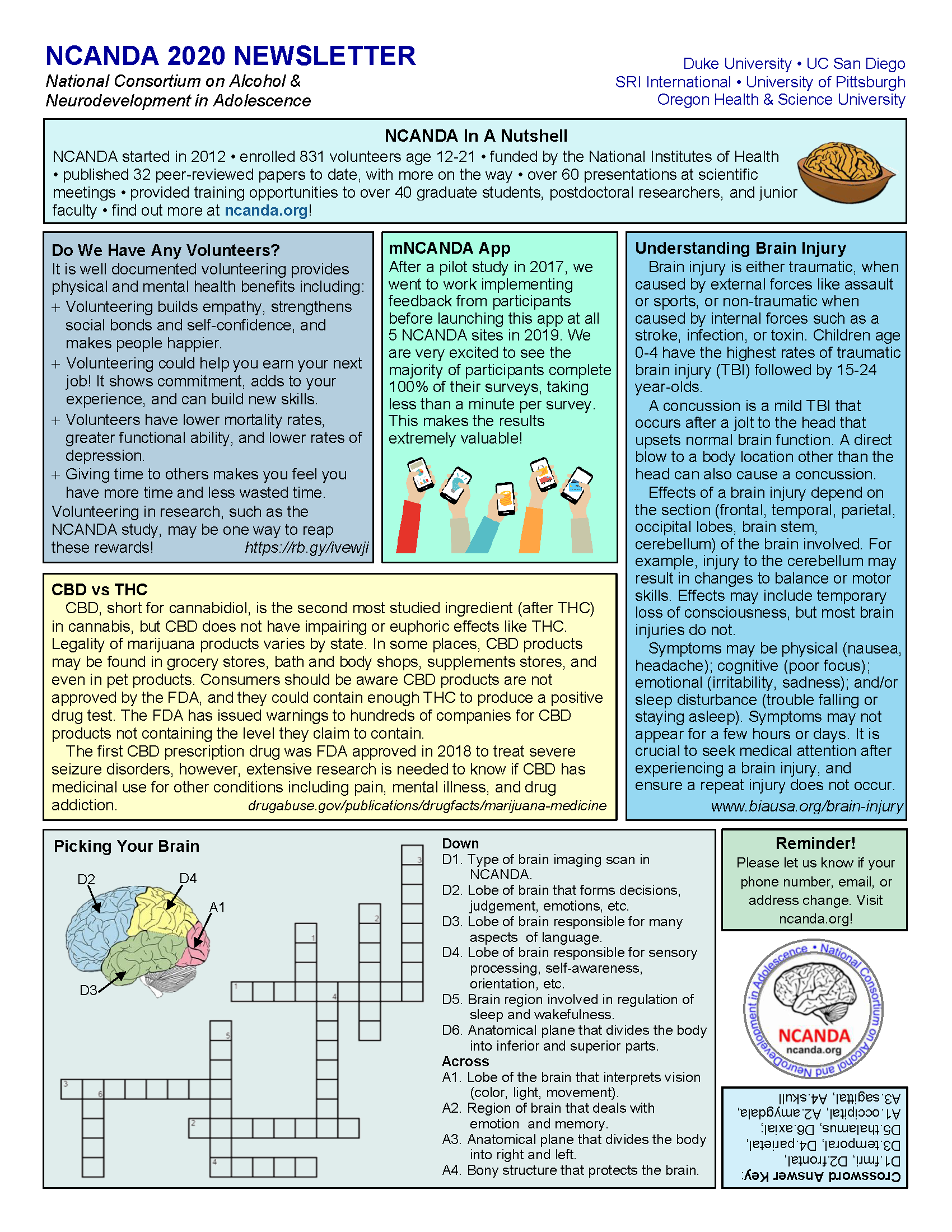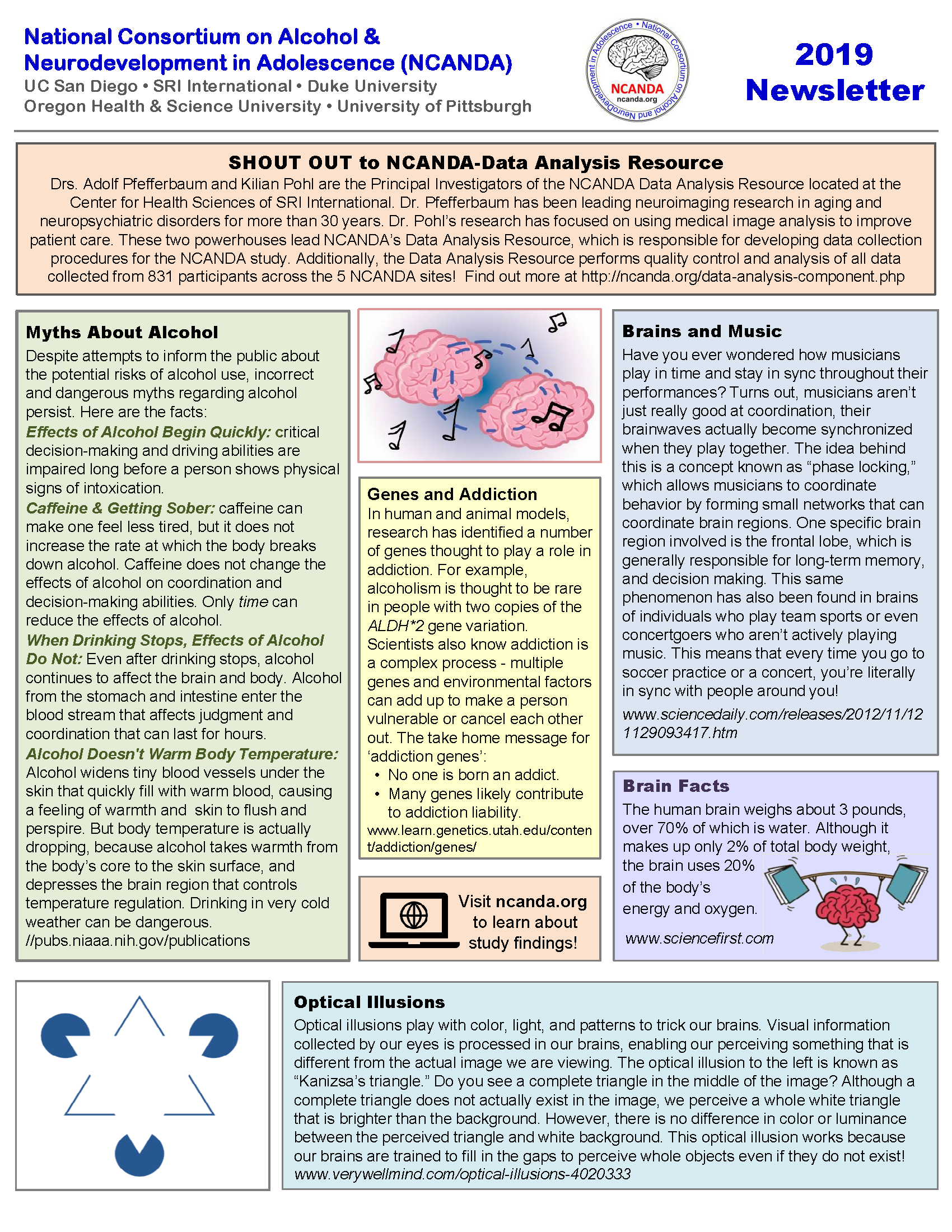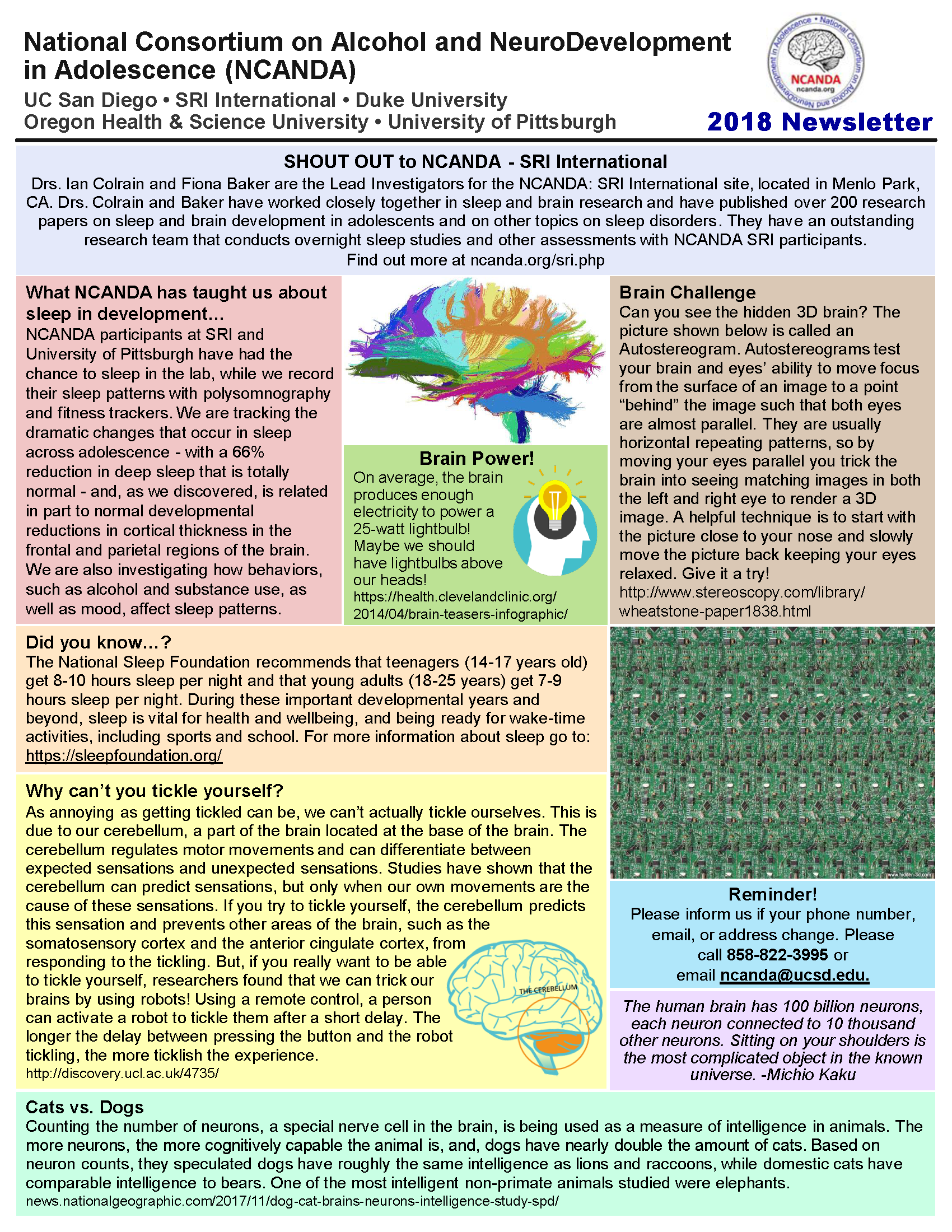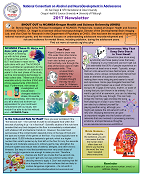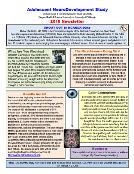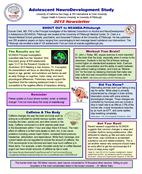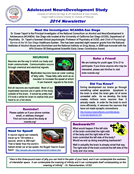ALCOHOL IN ADOLESCENCE - ADULTHOOD
Alcohol Use is Prevalent in Adolescence and Young Adulthood
Alcohol is the most commonly used substance by youth. Surveys show that 61% of high school seniors report having used alcohol in their life, and past month alcohol use increases from 6% to 28% between 8th and 12th grade. Of great concern is the prevalence of alcohol intoxication and binge drinking, with 12% of high school seniors reporting an episode of binge drinking (5+ drinks in a row in the past two weeks; Miech et al., 2022). » READ MORE

